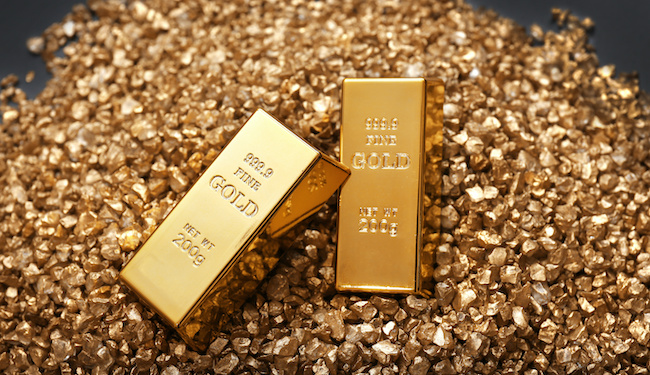Let’s face it:
Gold is a treasured commodity that many folks worldwide love to own.
Now, it has a scarce nature and is supposed to be fairly expensive, right? But then why is Chinese gold so cheap?
And that’s exactly what we’re going to talk about today. Specifically:
- the country’s regulatory environment
- gold production
- exchange rate effects
- lots more
There’s an intriguing backstory to why Chinese gold costs less, and we’ll look at the ins and outs of China’s market.
(Just to be clear, when we say ‘gold,’ we refer to bullion here, not jewelry or artsy pieces.)
Without further ado, let’s get started.
Regulatory Environment
China’s gold market is bustling and vibrant, but I’m sure you know that it’s also knotted up in a web of strict rules and regulations.
The government’s got a big say in this industry, shaping everything from how this precious metal is mined to how it’s sold and exported.
It’s a whole different ballgame compared to a lot of other countries.
The big player in all of this is the People’s Bank of China (PBOC), who are calling the shots for the country’s gold mining activities and their trading.
They’re also the gatekeepers for the international trade.
They control who gets export licenses—and they’re pretty stingy about handing them out. This makes China a ‘closed’ gold market.
The government’s game plan is to keep it mined domestically within the country to meet local demand.
This whole idea of limiting exports is all about having a backup supply at home. But it also creates a price difference between domestic and international prices.
You’ll find that gold within China often costs less than the one traded in global markets. This is because of the domestic oversupply caused by these regulations.
And then there are China’s Gold Exchange Markets, where trading happens.
The top dog among these is the Shanghai Gold Exchange (SGE), the world’s largest physical gold exchange.
It doesn’t just set the price in China; it also oversees its import and export, following the PBOC’s guidelines. The prices on the SGE often act as a yardstick for domestic prices.
Gold Production
Another part of the story of why Chinese gold is often less pricey has to do with how much of it the country produces.
It’s not just a big player on the global stage; China’s the top dog when it comes to churning out this precious metal.
There are plenty of reserves scattered across China’s vast landscape. You’ll find key mines in places like Shandong, Henan, Fujian, and Liaoning provinces.

As for who’s doing the mining, it’s a mix of state-owned mines, private companies, and joint ventures with overseas businesses.
In 2021, China was responsible for about 11% of the world’s gold output — that’s some serious clout.
This massive domestic production is a big factor in why gold prices in China are typically lower.
With so much supply right on their doorstep, there’s less need for the country to import this precious metal.
And importing involves extra costs like import duties, transportation, and insurance.
So a steady and plentiful supply means they can meet the massive demand within the country while keeping prices relatively low.
Then there’s the scale of China’s gold production operations.
We’re talking economies of scale — the idea that the cost per unit of this precious metal goes down, the bigger and more efficient the operations get.
The more you produce, the more you can spread out costs, which means lower prices for the end product.
Now, at this point you may ask:
- Why is Chinese gold so yellow?
- If it’s so cheap, is Chinese gold good quality?
It is good quality, provided that you get the real deal.
As for the color and durability, the minor impurities, the geological factor, and the addition of alloys can affect it.
VAT and Import Duties
Think of Value-Added Tax (VAT) as a tax that gets added to a product every step of the way, from production to distribution.
So when gold is sold in China, VAT gets added on top, making the price jump.
But here’s the twist: when this precious metal is shipped off to international buyers, the VAT gets refunded to the person doing the exporting.
This makes the price tag look a lot more attractive to buyers abroad.
Here’s an example to help picture it: let’s say the VAT is 17%, and a bar costs 1000 Yuan. Add the VAT, and the price shoots up to 1170 Yuan.
But if this bar gets sold to someone outside of China, that VAT can be lopped off, dropping the price back to 1000 Yuan. It’s a bit like a gold sale for international customers.
Now, import duties — another type of tax — also play a part in the pricing game.
When this yellow metal is brought into China, it’s hit with these customs duties.
This extra cost gets rolled into the final price, making imported gold more expensive than domestically produced.
Since China sits at the top of the gold-producing leaderboard, they don’t need to rely on importing as much.
That’s quite different from countries that don’t produce much gold — they have to import it and deal with the extra costs, making their prices look steeper in comparison.
Now, a heads up:
While these tax situations can make Chinese gold seem cheaper, especially for buyers outside of the country, it doesn’t always mean they’ll save money.
The VAT refund often goes straight into the pocket of the exporter, not the buyer.
And while imported gold is more expensive because of customs duties, this mainly affects the precious metal coming into China — not the less expensive one produced within the country.
Exchange Rate Effects
Gold prices are like a global language, usually discussed in US dollars per ounce.
But in local markets, like in China, you’ll hear the price quoted in the local currency, which is the Yuan. This sets up a back-and-forth between gold prices and exchange rates.

As the Yuan bounces up and down against the US dollar, the price of this precious metal does a similar dance.
Let’s say the Yuan takes a dip against the dollar. The price of gold in Yuan goes up, assuming the international dollar price of gold stays put.
But for someone outside China paying in dollars, the price in Yuan switched back into dollars would stay the same. This makes Chinese gold look like a bargain.
On the flip side, if the Yuan gets stronger against the dollar, the Yuan price of this precious metal drops.
For a buyer outside China, the dollar price would go up, making Chinese gold seem more expensive, even though the price has actually gone down for buyers in China.
Imagine an ounce of gold going for 1000 Yuan, and the exchange rate is 6 Yuan for every US dollar. That makes the gold about 167 dollars.
Now, if the Yuan drops to 7 per dollar, and gold stays at 1000 Yuan, the dollar price of this yellow metal would fall to around 143 dollars — good news for those buying with dollars.
Just remember that exchange rates bob up and down based on a whole bunch of factors, like interest rates, how the economy is doing, political stability, and trade flows.
So the effect of exchange rate changes on prices can be tough to predict and might not last long. But it’s essential to consider, especially if you’re buying or investing across different currencies.
Demand and Supply
The golden rule of economics, the law of demand and supply, also plays a pivotal role in explaining the relative cheapness of Chinese gold.
It’s all about balancing how much is available (supply) and how many people want to buy it (demand).
First, let’s look at the supply side.
As we’ve already established, China is the world’s largest producer of this precious metal.
This abundant supply within the country helps to keep prices lower than in countries that have to import more of their gold.

When supply exceeds demand, prices typically drop, and that’s what we see in China’s case.
But it’s not just about that. Demand plays a significant role, too.
Gold has a special cultural significance in China and is often bought in large quantities for weddings, holidays like Chinese New Year, and other special occasions.
It is also considered a reliable investment, a “safe haven” in uncertain economic times.
However, if the domestic demand for this precious metal in China is low, perhaps due to economic downturns or changes in consumer behavior, it could lead to a surplus in the market.
An oversupply situation like this can further depress prices, contributing to the cheaper cost of gold.
A key point to remember here is that this balance between demand and supply is dynamic, constantly changing based on various factors.
For instance, if the Chinese economy is booming and people feel wealthier, the demand could increase, driving up gold prices.
Conversely, if there’s an economic slowdown and people are cutting back on their spending, demand could fall, leading to lower prices.
On top of that, China’s growing middle class is influencing demand patterns.
As more people have disposable income to invest, gold becomes an attractive option for diversifying their portfolios. This growing demand could put upward pressure on prices.
China’s Affordable Gold Prices
So, why is gold cheaper in China?
Look:
Understanding why Chinese gold tends to be more affordable is like piecing together a big puzzle. There are a lot of parts that need to fit together just right.
We’re talking about things like government rules, how much gets produced, taxes, exchange rates, and good old supply and demand.
While it might be tempting to say Chinese gold is “cheap,” remember there’s a whole laundry list of factors that shape its price.
Understanding these gives a clearer picture of the country’s market and shines a light on the intricacies of global gold pricing.
And just like with any investment decision, it’s critical to stay informed and consider all these bits and pieces when you’re diving into the world of precious metals.
Over to you:
What are your thoughts on this? Is Asian gold good quality in your experience? Share your thoughts in the comments below!



